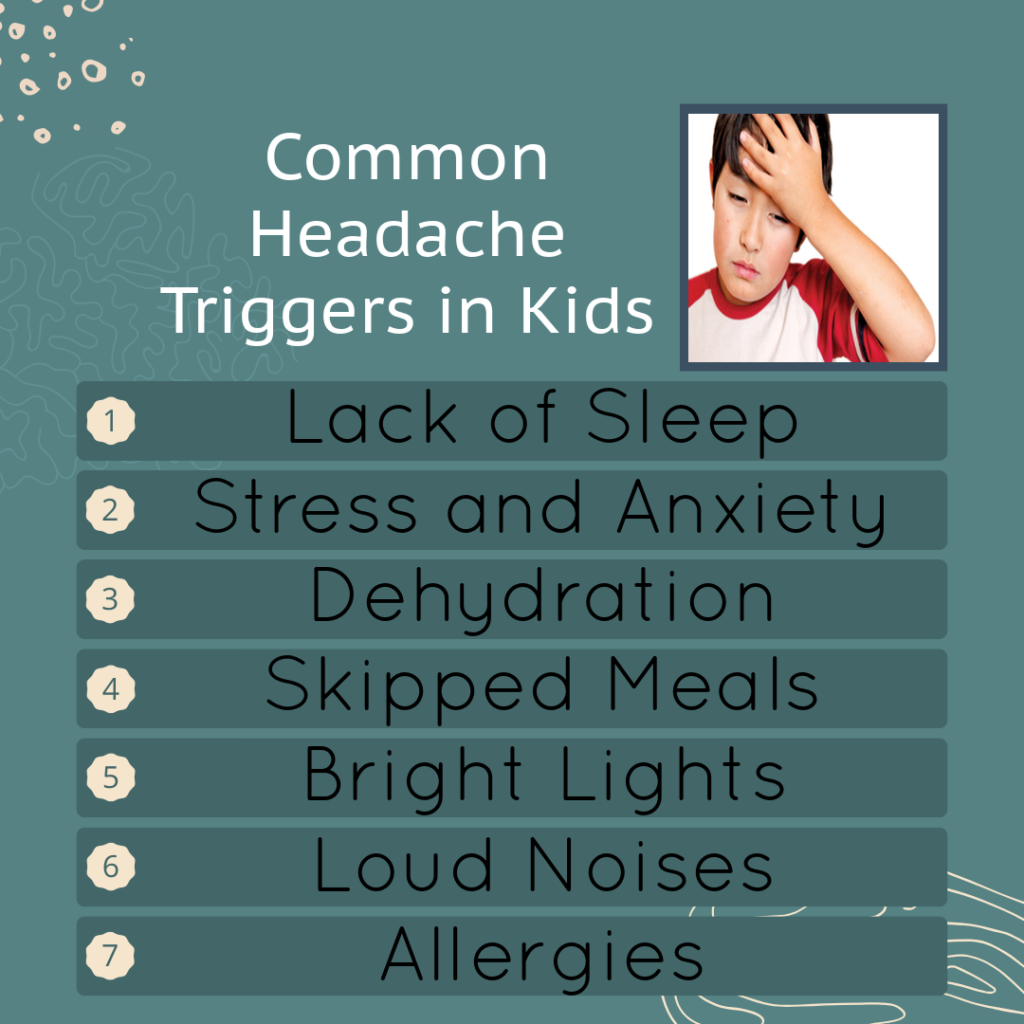Introduction: Understanding the Prevalence and Nature of Children’s Headaches
Children experience headaches more often than we might expect. Studies show that about 20% of kids report having headaches. These occur worldwide, highlighting their common nature. Although unsettling, most headaches in children are not a serious health concern. It’s essential to recognize this, so parents can focus on providing relief. A genuine understanding of these headaches can empower parents to help their child feel better.
Types of Headaches in Children
Children’s headaches can mainly be classified into tension headaches and migraines. Tension headaches are usually mild to moderate in pain, like the feeling of a tight band around the head. Migraines, however, are more intense and can involve throbbing pain, often accompanied by nausea. The nature of headaches in children differs from adults. For instance, children often experience headaches on both sides of the head, unlike adults who usually experience it on one. Genetics can influence headaches too; if a parent has a history of migraines, their child might, too.
Core Physical Triggers for Headaches
Various physical factors can trigger headaches in your child. Here are some common ones to watch out for:
- Sleep Patterns: Inadequate sleep or irregular sleeping schedules can often lead to headaches.
- Dehydration: Not drinking enough water is a significant trigger for many children. Keep the water coming!
- Nutrition: Poor eating habits, skipping meals, or not getting enough nutrients can also lead to headaches.
- Physical Activity Balance: Moving too much or not enough can trigger headaches. Finding a balance is key.
- Screen Time: Excessive time on tablets or computers might lead to headaches. Consider reducing screen exposure.
- Vision Problems: Unnoticed eye issues can strain your child’s eyes, resulting in headaches. Regular eye check-ups are essential.
Environmental and Emotional Influences
Stress plays a big part in headaches. Pressure from schoolwork or family issues can take a toll on kids. Additionally, the environment is a factor too. Distinct smells or loud noises might annoy your child, causing a headache. In places like India, environmental elements such as pollution or bustling streets add to this irritation. For adolescents, hormonal changes during puberty can also trigger headaches. Being aware of these influences can help identify what might be bothering your child.
Medical and Secondary Causes
Some headaches in children arise from common illnesses like colds or sinus infections. If your child is frequently sick, this might be the reason behind their headaches. Overuse of certain medications can also contribute to this problem, so it’s crucial to monitor their medicine intake. Rarely, headaches signal more serious health conditions. However, it’s important to stay informed rather than alarmed. Know that while these instances are rare, consulting a healthcare professional for odd symptoms is always wise.
Practical Solutions: The SMART Approach
To manage your child’s headaches effectively, consider the SMART approach:
- Sleep: Ensure your child has a consistent bedtime routine.
- Meals: Keep meal times regular and avoid skipping them.
- Activity: Balance playtime and rest periods to avoid overexertion.
- Relaxation: Teach them simple relaxation techniques to combat stress.
- Triggers: Watch for common headache triggers in your environment and daily life.
Following these tips can integrate well into your family’s routine, offering your child a better chance at avoiding headaches.
When to Seek Medical Advice
It’s crucial to know when to seek help for your child’s frequent headaches. Watch out for red flags such as headaches waking your child from sleep, accompanying neurological symptoms, or if they frequently miss school. These signs might require further investigation. During doctor visits, be prepared to discuss your child’s habits and symptoms in detail, which aids the doctor in determining the best course of action.
Conclusion: Empowering Parents
In conclusion, understanding common headache triggers in children makes a world of difference. By identifying and managing these triggers, parents can significantly ease their child’s discomfort. It’s about equipping yourself with the right knowledge and strategies. Above all, support and listen to your child, which empowers them as well. Together, tackling headaches becomes less daunting and more manageable.
